Directions (1-5): In each of the following questions assuming the given statements to be true, find which of the two conclusions I and II given below them is/are definitely true and give your answer accordingly.
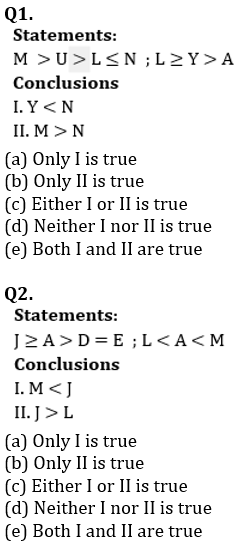
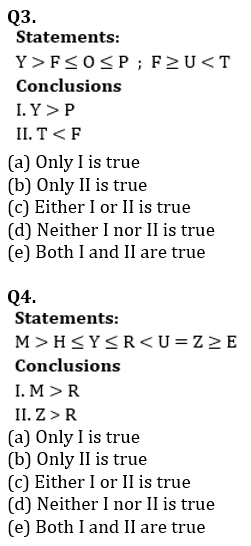
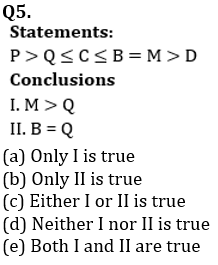
Directions (6-10): In these questions, relationship between different elements is shown in the statements. These statements are followed by two conclusions:
A%B means A is not greater than B
A*B means A is not greater than or equal to B
A@B means A is not smaller than B
A#B means A is not smaller than or equal to B
A&B means A is not greater than or smaller than B
Q6. Statements: A @ D # C % B * E
Conclusion: I. C # A
II. A @ C
(a) If only conclusion I follows.
(b) If only conclusion II follows.
(c) If either conclusion I or II follows.
(d) If neither conclusion I nor II follows.
(e) If both conclusion I and II follow.
Q7. Statements: P % L % M * N * Q
Conclusion: I. P * Q
II. Q # M
(a) If only conclusion I follows.
(b) If only conclusion II follows.
(c) If either conclusion I or II follows.
(d) If neither conclusion I nor II follows.
(e) If both conclusion I and II follow.
Q8. Statement: S % T & U # V @ X
Conclusions: I. U # S
II. S & T
(a) If only conclusion I follows.
(b) If only conclusion II follows.
(c) If either conclusion I or II follows.
(d) If neither conclusion I nor II follows.
(e) If both conclusion I and II follow.
Q9. Statement: M % N * O # P & Q
Conclusions: I. Q @ M
II. P * M
(a) If only conclusion I follows.
(b) If only conclusion II follows.
(c) If either conclusion I or II follows.
(d) If neither conclusion I nor II follows.
(e) If both conclusion I and II follow.
Q10. Statement: U % V % W &X % Y
Conclusions: I. Y # V
II. W # U
(a) If only conclusion I follows.
(b) If only conclusion II follows.
(c) If either conclusion I or II follows.
(d) If neither conclusion I nor II follows.
(e) If both conclusion I and II follow.
Q11. Which of the following symbols should replace the question mark (?) in the given expression in order to make the expressions A > B definitely true and E > B definitely false?
A ≥ C ? B < D ? E
(a) ≥, ≤
(b) >, =
(c) <, >
(d) ≥ , >
(e) none of these
Q12. Which of the following should be placed in the blank spaces respectively (in the same order from left to right) in order to complete the given expression in such a manner that makes the expression A > E as well as E ≤ R definitely true?
H _ A _ R _ S _ E
(a) =, =, ≥, ≥
(b) >, ≥, =, >
(c) >, <, =, ≤
(d) >, =, >, ≥
(e) >, >, ≥, =
Q13. Which of the following symbols should be placed in the blank spaces respectively (in the same order from left to right) in order to complete the given expression in such a manner that makes the expression H > S and A > E definitely false?
H _ A _ R _ S _ E
(a) <, <, <, =
(b) <, =, =, >
(c) >, =, =, <
(d) >, =, =, ≥
(e) >, >, =, <
Directions (14-15): In these questions, relationship between different elements is shown in the statements. The statements are followed by conclusions. Study the conclusions based on the given statements and select the appropriate answer. Give answer-
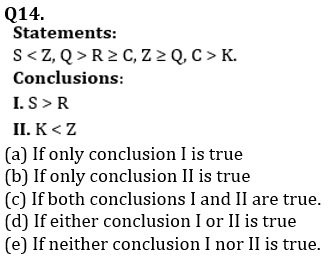
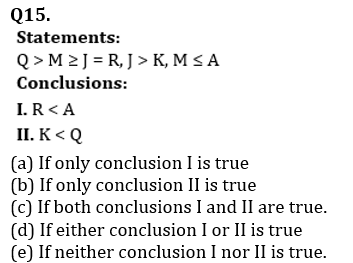
Solutions
Solution (1-5):
S1. Ans. (d)
S2. Ans. (b)
S3. Ans. (d)
S4. Ans. (b)
S5. Ans. (c)
Solutions (6-10):
S6. Ans. (d)
Sol. Conclusion:
I. C # A (Not True)
II. A @ C (Not True)
S7. Ans. (e)
Sol. Conclusion:
I. P * Q (True)
II. Q # M (True)
S8. Ans. (c)
Sol. Conclusions:
I. U # S (Not True)
II. S & T (Not True)
S9. Ans. (c)
Sol. Conclusions:
I. Q @ M (Not True)
II. P * M (Not True)
S10. Ans. (d)
Sol. Conclusions:
I. Y # V (Not True)
II. W # U (Not True)
S11. Ans. (e)
S12. Ans. (e)

S14. Ans. (b)
Sol. I. S > R (False)
II. K < Z (True)
S15. Ans. (b)
Sol. I. R < A (False)
II. K < Q (True)



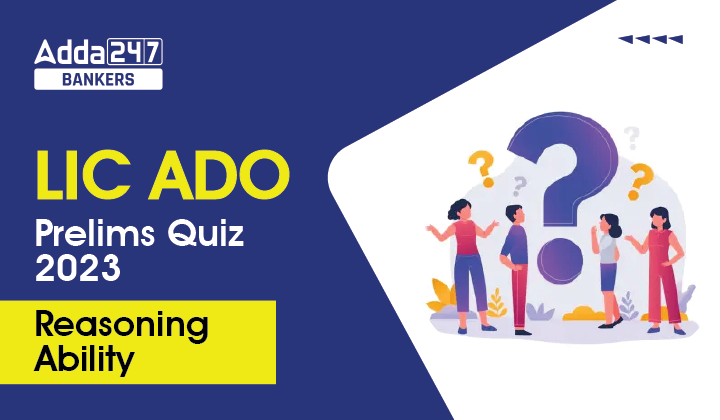

 GA Capsule for SBI Clerk Mains 2025, Dow...
GA Capsule for SBI Clerk Mains 2025, Dow...
 The Hindu Review October 2022: Download ...
The Hindu Review October 2022: Download ...
 SBI Clerk Prelims Result 2025 Out, Direc...
SBI Clerk Prelims Result 2025 Out, Direc...







